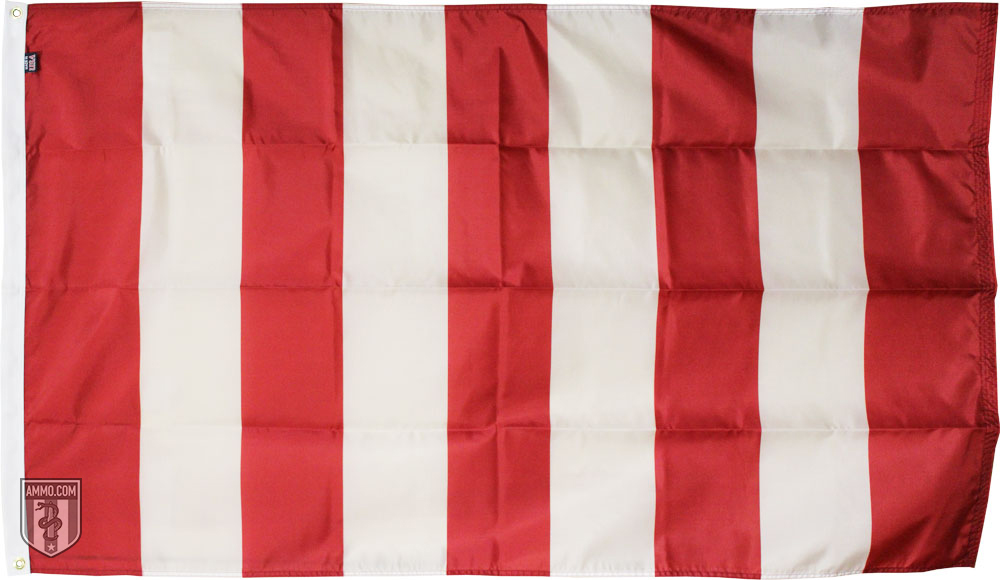
The Sons of Liberty flag is very meaningful to us, as it’s the flag that inspired the backdrop of our logo. Its origins go back to 1765, when a secretive group of patriots known as “the Loyal Nine” was formed – the group behind the original Boston Tea Party. The flag was then known as “the Rebellious Stripes” and it was banned by the British king, the highest endorsement the Crown could give.
The Sons of Liberty were perhaps the most radical group of American patriots during the pre-Revolutionary period, but the true Sons of Liberty had a relatively short lifespan. They were formed in response to the Stamp Act of 1765 and disbanded when the Act was repealed. Still, the name lived on as a popular brand name for the biggest firebrands of the American Revolution.
Many of the members of the true Sons of Liberty are American legends who need no introduction. Samuel Adams. John Hancock. Patrick Henry. Paul Revere. Even Benedict Arnold counted himself among their number. It’s unclear whether the original Sons of Liberty were a clandestine organization with an official membership or just a rallying point for anyone who opposed the Stamp Act. Ultimately, it doesn’t matter. The unified identity of opposition to the Crown was the organization, whether it was official or not.
The motto of the Sons of Liberty was a simple phrase known to virtually every American: “No taxation without representation.” While its origins are largely shrouded in mystery and lacking firm documentation, many experts agree that, to the extent that it was an organization with members, it was founded by none other than famous rabble rouser Samuel Adams.
The Stamp Act of 1765 existed for the purpose of bankrolling British troops in the New World. Colonists resisted the Stamp Act not because the taxes themselves were intolerable, but because they believed their rights as British subjects were being violated by taxation without representation.
The first branch was founded in Boston in August 1765, followed by a satellite in New York in November of the same year. December saw communication between groups in Connecticut and New York. In January of 1766, Boston and New York linked up. By March, Providence was in communication with New Hampshire, Newport, and New York. Later that year in March, groups were set up in Maryland, New Jersey, and as far south as Virginia.
The Sons of Liberty were much more than a propaganda organization. They were a militant, direct-action group in contrast to the petitioning and speeches of more moderate figures like John Adams. For example, Boston’s stamp distributor Andrew Oliver was burned in effigy before his office was burned to the ground. Boston Commissioner of Customs John Malcolm was tarred and feathered and had hot tea poured down his nose and throat. This was in keeping with the social base of the Sons: “Tavern mongers, wharf rats, and other seedy characters looking to cause trouble.”
The Sons of Liberty name was used in the pre-Revolutionary period by unrelated groups, but also in later periods of American history. For example, Copperhead group the Knights of the Golden Circle set up an offshoot called the Order of the Sons of Liberty. A radical Zionist group organized an American boycott of British films in protest of Britain’s Palestine policies under the name.
The primary activity of the Sons of Liberty was tracking British troop movements. This was important to warn colonial garrisons that troops might be coming to confiscate arms or powder from the colonists. Another common organizing activity of the Sons was to gather around a large elm tree for protests and discussion. These were known as “Liberty Trees,” where the flag was most commonly flown.
When the Stamp Act was repealed in 1766, the local Liberty Tree is where Bostonians gathered to celebrate – but it would also become home to the most rambunctious protests.
Many times, the British would cut down the tree in an attempt to stamp out the meetings of the Sons. But the Sons simply erected a pole (known as, what else, the “Liberty Pole”) in the place where the tree once stood. Local taverns, such as the Green Dragon in Boston, were another place where the seditious met to plot and plan. The liberty poles (or reproductions thereof) still dot the towns and hamlets of the East Coast, in particular the Northeast and New England. Thomas Paine eulogized the Boston Liberty Tree in a 1775 poem, and a bronze plaque sits at its former site today.
The Sons of Liberty Flag: How The Rebellious Stripes Flag Shaped American Patriotism originally appeared in The Resistance Library at Ammo.com.
